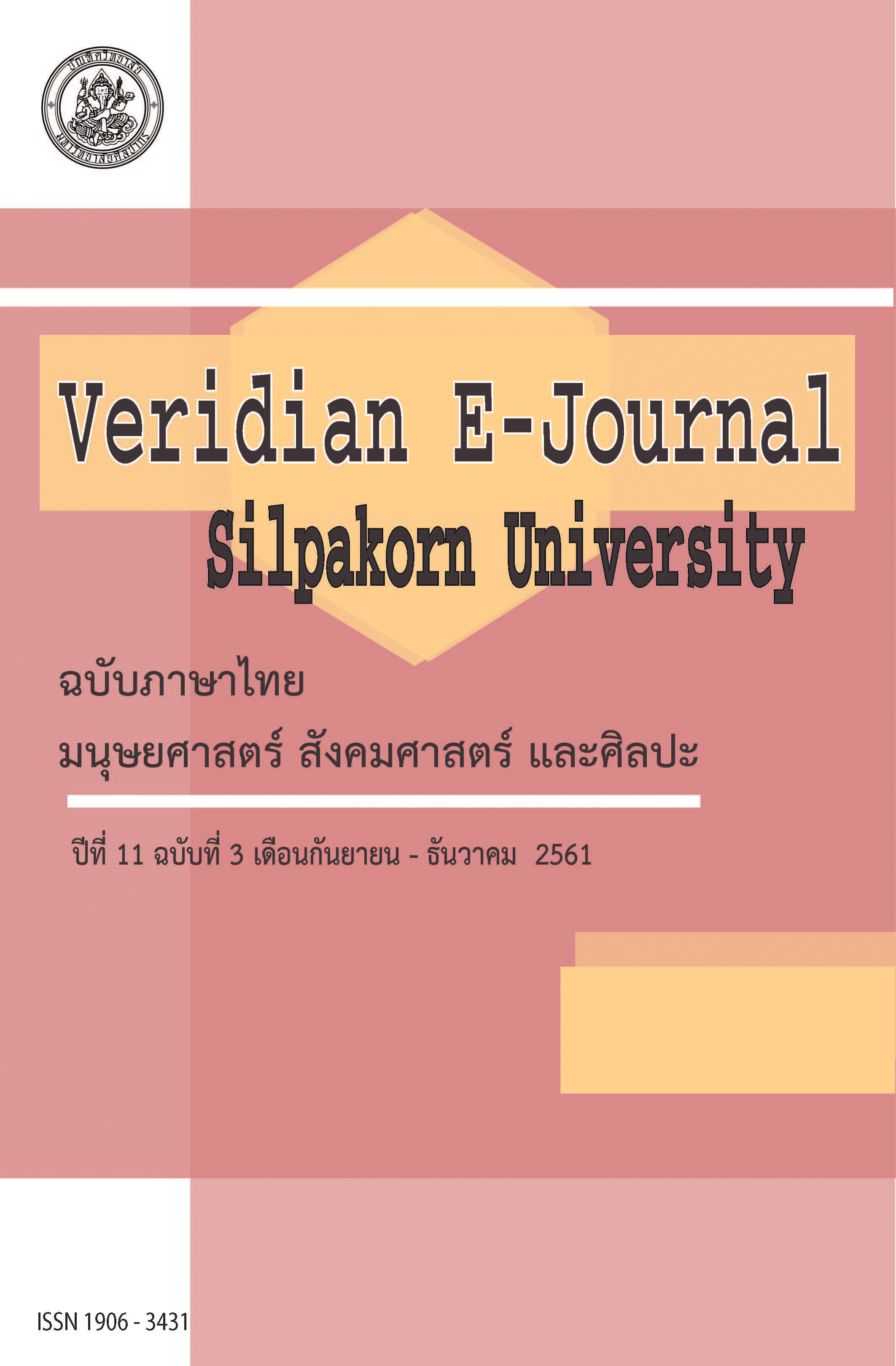รูปแบบการประยุกต์ใช้เทคโนโลยีดิจิทัลเพื่อส่งเสริมการบูรณาการการเรียนการสอน สู่การบริการวิชาการชุมชน (A Model of Digital Technology Application for Integration of Learning to Academic Service.)
Main Article Content
Abstract
การวิจัยครั้งนี้มีวัตถุประสงค์เพื่อ 1) สังเคราะห์รูปแบบการประยุกต์ใช้เทคโนโลยีดิจิทัลเพื่อส่งเสริมการบูรณาการการเรียนการสอนสู่การบริการวิชาการชุมชน 2) พัฒนากิจกรรมการประยุกต์ใช้เทคโนโลยีดิจิทัลฯ 3) ทดลองใช้กิจกรรมการประยุกต์ใช้เทคโนโลยีดิจิทัลฯ และ 4) ศึกษาผลการยอมรับกิจกรรมการประยุกต์ใช้เทคโนโลยีดิจิทัลฯ กลุ่มเป้าหมาย เป็นนักศึกษาระดับปริญญาตรี จำนวนทั้งสิ้น 34 คน และผู้ที่เกี่ยวข้อง จำนวน 80 คน เครื่องมือที่ใช้ในการวิจัย คือ กิจกรรมการประยุกต์ใช้เทคโนโลยีดิจิทัล และเครื่องมือของกิจกรรม ได้แก่ คู่มือ แบบประเมิน แบบสอบถาม สถิติที่ใช้คือ ร้อยละ ค่าเฉลี่ย และส่วนเบี่ยงเบนมาตรฐาน
ผลการวิจัยพบว่า 1) รูปแบบการประยุกต์ใช้เทคโนโลยีดิจิทัล มี 5 ส่วน ได้แก่ ส่วนที่ 1 นโยบาย หลักการ และทฤษฎีที่เกี่ยวข้อง ส่วนที่ 2 ทฤษฎีการเรียนรู้ PjBL ส่วนที่ 3 กิจกรรมการเรียนรู้แบบมีส่วนร่วม ส่วนที่ 4 เทคโนโลยีดิจิทัล และส่วนที่ 5 ตัวบ่งชี้ของกิจกรรม ความเหมาะสมของรูปแบบอยู่ในระดับมาก ( =4.49, S.D.=0.50) 2) กิจกรรมการประยุกต์ใช้เทคโนโลยีดิจิทัล มี 4 กิจกรรม ได้แก่ กิจกรรมวางแผนร่วมกัน กิจกรรมการเรียนรู้ กิจกรรมประเมินผล และกิจกรรมการเผยแพร่ ความเหมาะสมของกิจกรรม อยู่ในระดับมากที่สุด (
=4.68, S.D.=0.47) 3) นักศึกษามีคะแนนเฉลี่ยหลังการเรียนรู้สูงกว่าก่อนการเรียนรู้ อย่างมีนัยสำคัญทางสถิติที่ระดับ .05 สามารถทำหรือปฏิบัติได้ เป็นแบบอย่างได้ ร้อยละ 80.88 สามารถทำหรือปฏิบัติได้ โดยต้องให้การแนะนำ ร้อยละ 17.16 และไม่สามารถทำหรือปฏิบัติไม่ได้ ร้อยละ 1.96 ผลการประเมินชิ้นงาน อยู่ในระดับมากที่สุด (
=4.60, S.D.=0.49) ความพึงพอใจที่มีต่อกิจกรรม อยู่ในระดับมากที่สุด (
= 4.68, S.D.=0.44) และความพึงพอใจที่มีต่อการบริการวิชาการ อยู่ในระดับมากที่สุด (
= 4.74, S.D.=0.44) 4) ความคิดเห็นที่มีต่อการยอมรับกิจกรรมการประยุกต์ใช้เทคโนโลยีดิจิทัล อยู่ระดับมากที่สุด (
=4.85, S.D.=0.37)
The purposes of the research were to 1) synthesis the model of digital technology application for integration of learning to academic service (2) to develop a activity of the model of digital technology application for integration of learning to academic service (3) to experiment the model of digital technology application for integration of learning to academic service (4) to study the results of the agreed activities of the model of digital technology application for integration of learning to academic service. The target group were the undergraduate students, the total number of 34 people and those involved 80 people. The research tools were the activity of the model of digital technology application for integration of learning to academic service and the instrument of the activity include the handbook, the assessment form and the questionnaire. The statistics used were the percentage, average and the standard deviation.
Research findings were as follows : 1) the model of digital technology application for integration of learning to academic service had 5 parts include ; Part 1 The policy, the Principle and the relevant theories. Part 2 The PjBL learning theory. Part 3 The participatory learning activities. Part 4 The digital technology And part 5 the indicator of activity which the suitability of the model at a high level ( =4.49, S.D.=0.50) 2) the application of digital technology had 4 activities include ; planning activities together, learning activities, assessment activities and publishing activities which the suitability of the activities at the highest level (
=4.68, S.D.=0.47). The students had an average score after learning than before learning was being significant at the .05 level which can do or practice as a model was 80.88 percent. Can to do or to practice By need to provide advice was 17.16 percent. And Can’t to do or to practice was 1.96 . The evaluation of work piece at the highest level (
=4.60, S.D.=0.49). The satisfaction with activities at the highest level (
= 4.68, S.D.=0.44) The satisfaction with academic services at the highest level (
= 4.74, S.D.=0.44). The opinions on acceptance with the model of digital technology application for integration of learning to academic service at the highest level (
=4.85, S.D.=0.37).
